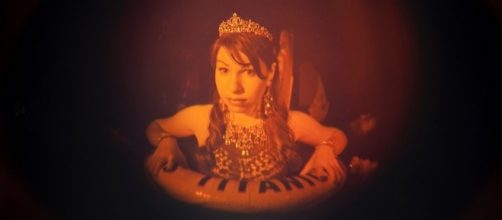Artist Patrick Boyd was born in the Chelsea neighborhood of London to parents who were both artists. At age seventeen, he started getting seriously interested in photography as a profession. On a Fulbright Fellowship, he moved to America in 1989 where he lived in New York. After also experiencing life in Germany and Japan, Patrick now resides in South Wales where he has a holography studio setup in his basement.
Patrick’s photos and creative sense--especially via the holographic medium--have earned him worldwide recognition. He currently is working on display in America via a showcase at the HoloCenter on Governors Island in New York City and has enjoyed displaying his work in both group and solo shows.
Patrick occasionally hosts Kickstarter campaigns to raise funds for his projects, endeavors which are often successful thanks to his global fan base. When he is not working on his are, he enjoys restoring old Volkswagon campers, playing boule and hanging out with his four children — aged between twenty-five and nine — and his dog, Rocket, and cat, Graham. In an exclusive recent interview, Patrick discussed his experiences as an artist, his current projects, and his plans for the future.
Artwork, images, and holography
Meagan Meehan (MM): When did you discover holograms and how did you decide that you wanted to work in this artistic medium?
Patrick Boyd (PB): Got a job in a holography studio purely by accident as I was looking for a job as a photographer’s assistant at the time.
A year or two later, a postgraduate program started at the Royal College of Art specializing in holography. I got on, but I’m not sure if I really figured it out as an “art medium” until some years after I graduated.
MM: You make holograms in many different shades and colors, so how do you decide which hue best suits an image?
PB: Color in holography is mostly dictated by the medium. I like to get as broadband effect as possible.
MM: Women are featured very prominently in your work, so what do you seek in your models?
PB: Yes, women were very much inspiration in my early artwork. The images in the “Ripple Effect” show were a throwback to my early work. Now I am concentrating on stereograms as in the “Iridescence” show.
When I first started making “pulsed laser” holograms (the ones that feature women) I was interested in the idea of developing holography as a fashion medium and worked with the fashion designer Zandra Rhodes and did a shop window for her. We experimented with makeup that was more 3D than conventional, and subsequent holograms followed this trend. My new work is definitely concentrating on stereograms (made up of photographic images).
MM: What, exactly, are "stereograms" and how would you describe the artistic images that they produce?
PB: Stereograms are holograms that are composed using a series of photographic images or video stills. Last year, I focused on Morris Dancers because of the motion suites itself very much to my style of work.
While completing this project, I found myself going to lots of festivals and some of them had circus-style performers. I found these very interesting since it is all about time and motion with me. Having had a long sabbatical from holography and upon returning, the main difference is that now, everyone has a camera! When I made stereograms some twenty years ago, I had a big Nikon camera, and people got out of the way when I started to film (this was walking like a crab for about twenty paces)! Nowadays, everyone is there with their phone. The selfie is a modern phenomenon that needs recording.
Holograms, photography, and exhibitions
MM: What is it about holography that makes it so much more appealing to you than traditional photography?
PB: I love holography because holograms are tangible. I can’t really be replicated on the web. I have to get my hands dirty making them! I record time and motion as well as 3D. My stereograms usually record about four seconds of time and the pulse holograms record a split second (thirty nano-seconds). The stereograms have a historical feel to them, even though they are modern images. I also like the aspect that they are backward compatible and require only a light source to reveal their story
MM: How did you find out about the HoloCenter and what have your experiences exhibiting with them been like?
PB: I have known about the HoloCenter for many years, they are absolute champions of holography, and I enjoy my exhibitions with them.
MM: Be honest, do you have a favorite hologram out of all the ones you have made?
PB: I have many favorite holograms especially from different periods of my career. From the current show, I would have to say “Terminus.” It is just a view of a railway station in London (Paddington), but it perfectly captures a moment in time.
MM: What kinds of reactions have you gotten from viewers and, thus far, what has been the most memorable moment of your artistic career?
PB: I always enjoy the reactions I get from viewers and still am amazed that with all the technology that is in our lives now that some people are totally knocked out when viewing the works!
MM: What sorts of subject matter would you like to work with next, hologram-wise, and where do you envision your artistic career being in ten years?
PB: Most of my imagery is documentary in nature. I come across a scene and record it as best as I can as if I was a documentary filmmaker or photography. I am trying now to work out ways to combine images, both holographic and photographic to tell a story and/or introduce more of a narrative into the works. At the moment, I am working on projects involving circuses, selfies, and festivals.


